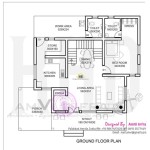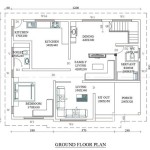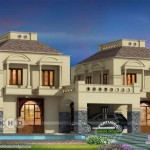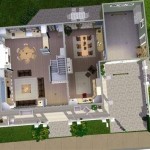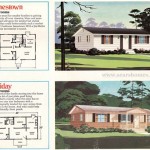Elevated Cubby House Plans: A Comprehensive Guide to Design and Construction
Elevated cubby houses, also known as treehouses or elevated playhouses, offer children a unique and engaging play environment. They capitalize on vertical space, providing a sense of adventure and imaginative play that ground-level structures cannot replicate. The construction of an elevated cubby house requires careful planning and execution, with the key to success being a robust and well-designed plan. This article provides a comprehensive overview of the considerations involved in selecting and implementing elevated cubby house plans, focusing on safety, structural integrity, and aesthetic appeal.
Understanding the Core Considerations for Elevated Cubby House Design
The design and construction of an elevated cubby house necessitates a thorough understanding of several core principles. These principles guide the selection of suitable plans and ensure a safe and enjoyable play space. Ignoring these considerations can lead to structural instability, potential hazards, and ultimately, a cubby house that fails to meet its intended purpose.
Safety First: Safety is paramount in any construction project involving children. Elevated structures introduce unique safety concerns related to falls. The plan must address fall prevention through the inclusion of appropriate railings, handrails, and safety barriers. The height of the structure must be carefully considered, balancing the desire for elevation with the potential for injury. The material selection is also crucial. Untreated lumber can splinter, and certain paints and finishes may contain harmful chemicals. All materials used should be non-toxic and designed for outdoor use.
Structural Integrity: The cubby house must be capable of withstanding the dynamic loads imposed by children playing. This requires a sturdy support structure, typically consisting of posts and beams. The plan must specify the appropriate size and spacing of these structural elements, taking into account the overall size and weight of the cubby house. Soil conditions also play a significant role. In unstable or sandy soil, deeper footings or alternative foundation systems may be necessary. The connection methods, such as bolts, screws, and nails, must be appropriately sized and spaced to ensure a strong and durable connection. It's advisable to consult with a structural engineer to review the plans, especially for larger or more complex designs.
Aesthetic Integration: While safety and structural integrity are paramount, the aesthetic design of the cubby house should also be considered. The cubby house should ideally complement the surrounding environment and reflect the style of the main residence. The plan should address the visual impact of the structure, including the choice of materials, colors, and architectural details. Natural materials, such as wood and stone, can create a more harmonious and visually appealing structure. The placement of the cubby house within the landscape should also be carefully considered to maximize sunlight exposure and minimize visual obstruction.
Key Elements to Look for in Elevated Cubby House Plans
Not all elevated cubby house plans are created equal. A well-designed plan will include detailed instructions, clear diagrams, and a comprehensive materials list. It should also address potential challenges and provide solutions for common construction issues. The following key elements are essential for ensuring a successful build.
Detailed Drawings and Specifications: The plan should include detailed drawings that clearly illustrate the dimensions, layout, and construction details of the cubby house. These drawings should include plan views, elevation views, and section views, providing a comprehensive understanding of the structure. The specifications should clearly define the materials to be used, including the type, size, and grade of lumber. It should also specify the type and size of fasteners, such as bolts, screws, and nails. Tolerances and acceptable variations should also be clearly defined to ensure that the construction meets the desired standards.
Comprehensive Materials List: A comprehensive materials list is essential for accurate budgeting and efficient construction. The list should include all necessary materials, from lumber and fasteners to roofing and finishing materials. The quantities of each material should be clearly specified, allowing for accurate ordering and minimizing waste. The list should also include the dimensions and specifications of each material, ensuring that the correct items are purchased. A well-organized materials list can save time and money by preventing delays and minimizing the need for multiple trips to the hardware store.
Step-by-Step Instructions: The plan should include clear, concise, and easy-to-understand step-by-step instructions for each stage of the construction process. These instructions should be accompanied by diagrams or photographs to illustrate the steps involved. The instructions should also include safety precautions and warnings to prevent accidents and injuries. The instructions should be organized in a logical sequence, ensuring that each step builds upon the previous one. A well-written set of instructions can significantly reduce the risk of errors and ensures that the cubby house is constructed correctly.
Foundation and Support Structure Details: The foundation and support structure are critical components of an elevated cubby house. The plan must provide detailed specifications for the foundation, including the type of footing, the depth of the footing, and the materials to be used. It should also specify the size and spacing of the support posts and beams, as well as the connection methods. The plan should also address issues such as soil conditions and drainage, ensuring that the foundation is stable and durable. If the cubby house is to be attached to a tree, the plan must include specific details on how to attach the structure without damaging the tree.
Fall Protection Measures: As previously mentioned, fall protection is paramount in the design of an elevated cubby house. The plan should include detailed specifications for railings, handrails, and safety barriers. The height and spacing of these barriers should comply with relevant safety standards. The plan should also address the design of the access ladder or stairs, ensuring that they are safe and easy to use. Features such as non-slip surfaces and handrails are essential for preventing falls. The plan should also address the potential for children to climb on the outside of the structure, incorporating features such as smooth surfaces or non-climbable barriers.
Accessibility Considerations: The plan should consider accessibility for children of different ages and abilities. The access ladder or stairs should be designed to be easily navigable by young children. The interior of the cubby house should be spacious enough to accommodate multiple children playing. The plan should also consider the placement of windows and doors, ensuring that they are accessible and easy to operate. For children with mobility impairments, the plan may need to incorporate ramps or other assistive devices.
Modifying Existing Plans and Adapting to Specific Needs
While pre-designed elevated cubby house plans can provide a solid foundation, many homeowners choose to modify these plans to better suit their specific needs and preferences. This customization can involve changes to the size, layout, materials, or features of the cubby house. However, modifications should be approached with caution, ensuring that they do not compromise the structural integrity or safety of the structure.
Scaling the Design: Adjusting the size of the cubby house to fit the available space is a common modification. When scaling the design, it's crucial to maintain the proportions of the original plan. Simply increasing or decreasing the dimensions without considering the structural implications can lead to instability. The size and spacing of the support posts and beams may need to be adjusted accordingly to maintain the structural integrity of the cubby house. It's advisable to consult with a structural engineer to review any significant changes to the size of the structure.
Changing the Layout: Modifying the layout of the cubby house can create a more functional and engaging play space. This may involve adding or removing walls, changing the placement of windows and doors, or incorporating new features such as a slide or climbing wall. When changing the layout, it's important to consider the impact on the structural stability of the cubby house. Removing a load-bearing wall, for example, may require the addition of a new support beam. The placement of windows and doors should also be carefully considered to maximize natural light and ventilation.
Substituting Materials: While the original plan may specify certain materials, homeowners may choose to substitute these materials with alternatives that are more readily available or more aesthetically pleasing. When substituting materials, it's important to ensure that the new materials are of comparable strength and durability. For example, substituting pressure-treated lumber with untreated lumber is not advisable, as it can significantly reduce the lifespan of the cubby house. The substitution of materials should also be carefully considered in terms of cost and availability. In some cases, the cost of the alternative material may be significantly higher than the original material, or the alternative material may be difficult to obtain.
Adding Custom Features: Incorporating custom features, such as a slide, climbing wall, or swing set, can enhance the play value of the cubby house. When adding these features, it's important to ensure that they are securely attached to the structure and that they do not compromise the structural integrity of the cubby house. The plan should specify the type and size of fasteners to be used, as well as the attachment methods. The added features should also comply with relevant safety standards. For example, a slide should have a smooth surface and a safe landing area. A climbing wall should have secure handholds and footholds.
Addressing Site-Specific Challenges: Every construction site presents unique challenges. These challenges may include uneven terrain, rocky soil, or proximity to utilities. The plan may need to be modified to address these challenges. For example, if the terrain is uneven, the foundation may need to be adjusted to ensure that the cubby house is level. If the soil is rocky, the footings may need to be dug deeper or wider. If there are utilities in the area, the construction may need to be coordinated with the utility companies to avoid damage. It's advisable to consult with a local contractor or engineer to assess the site-specific challenges and develop appropriate solutions.
The construction of an elevated cubby house is a rewarding project that can provide children with years of enjoyment. By carefully selecting and implementing elevated cubby house plans, homeowners can create a safe, durable, and aesthetically pleasing play space that complements their home and landscape. Remember to prioritize safety, structural integrity, and aesthetic integration throughout the planning and construction process. Consulting with professionals, such as structural engineers or experienced contractors, can provide valuable insights and guidance, ensuring a successful and satisfying outcome.

Country Cottage Cubby House Kitwood Group Pty Ltd

The Summery Umbrella Blog Play Houses Cubby Build A Playhouse

Ziya S Big Blue Cubby Kyal Kara

Queenslander Cubby House Outdoor Playhouse Kitwood Group Pty Ltd

The Cubby House Build

Country Cottage Cubby House By Cubbykraft Cubbies Plans

Projects Diy Cubby House

Kettle Creek Cubby House Kitwood Group Pty Ltd

How To Raise A Cubby House Off The Groun Bunnings Work Community

Projects Diy Cubby House

